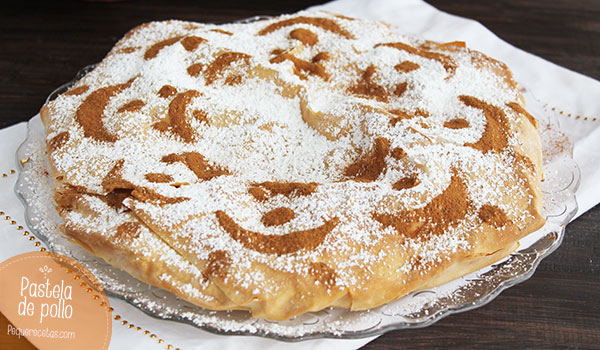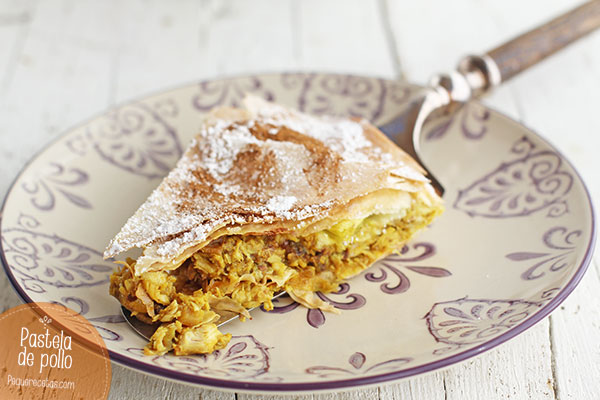PASTELA:

HISTORY:
The dish would have been one of the favorite dishes of the Sultan of Fes
in Morocco. He would have asked a famous Spanish chef if he could make the dish
Judhaba more delicious for his guests. Today, the dish Bastilla is the official
dish of the city of Fes in Morocco. The name of the Pie comes from the Spanish
word 'pastilla' meaning in modern Spanish either pill or "small pastry"
after the transformation of the phoneme "p" into "b" that
is specific to the Arabic language. It is an elaborate meat pie traditionally
made of squab. As squabs are often hard to get, shredded chicken is more often
used today; pastilla can also use fish or offal as a filling. Pastilla is
generally served as a starter at the beginning of special meals.

INGREDIENTS:
For the filling:
-150g butter
- 1 Chicken
-3 onions
-1 cinnamon stick
-150g almonds (toasted and roughly chopped)
-6 eggs
For the pastry:
- 1 kg warka pastry
-2 teaspoons icing sugar
-1 teaspoon cinnamon
PREPARATION:
1. In a wide pan, melt 100g of the butter, then add the chicken , onions
and cinnamon stick. Cover with water, season well with salt and cook over a low
heat for an hour.
2. Remove chicken and turn up the heat; reduce the mixture while you
remove the meat from the bones, shred it and add back into the pan. Add the
chopped almonds.
3. Break the eggs into a bowl and gently whisk, pour two thirds into the
chicken mixture and stir, cooking over a medium heat until little bits of
cooked egg appear. Taste and add salt to get it , savoury and exotic. Preheat
oven to 150C/300F/Gas 2.
4. Melt the remaining butter in a small pan. Lay three sheets of filo
pastry out on small side plates, and butter each sheet lightly with a pastry
brush. Repeat to layer it three times, buttering the filo as you go.
5. Using a slotted spoon, put a third of the chicken mixture into each
of the filo piles, leaving the excess liquid behind. Then fold over the sides
of the pastry to make a sealed, round parcel. Paint each pastilla with any of
the remaining butter and the last of the whisked egg to seal them.
5. Transfer to a baking tray and bake for 45 minutes until the filo is
crisp and brown. Dust with icing sugar and cinnamon and eat while hot.